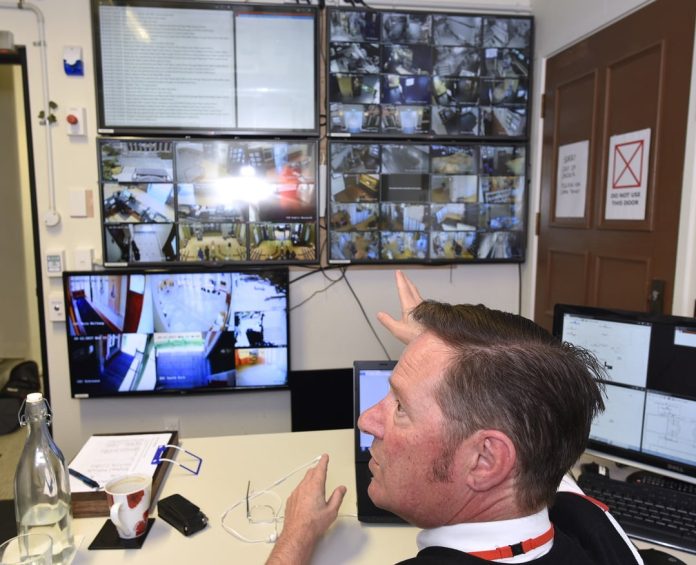EFFECTIVE electronic security and automation solutions of the future will be those that meet achievable operational goals in the most efficient, secure and manageable ways. However, there’s nothing easy about real-world security integration – in many cases it requires customisation at every point systems meet, as well as in every layer of a management system.
The user interface is particularly vital. This top layer needs to be powerful enough to liberate underlying functionality without confounding operators in labyrinthine root directories. There’s nothing easy about achieving intuitive system management – it’s an emergent property of an evolutionary process taken in lockstep with end users and integrators over time. More than any other security technology, a capable user interface is a partnership.
For security operators, low touch operation is the key to intuitive operation and fast response. That means sub system events are best represented as active icons on graphical maps. The ability of an integrated system to inform and to express operating procedures is vital to ensure best practise is followed every single time, including those times the security team is under severe stress.
An integrated solution that is not empowered by operating procedures linked to reporting is open to interpretation and is certain to be subject to failures of escalation in real time. A balance is needed when you’re seeking situational awareness to ensure operators don’t end up drowning in detail and event logs don’t fall victim to timeline death.
Planning is the most important part of any integration. The system needs to meet a user’s considered expectations in dependable ways that deliver maximum operational torque. And the systems integrated need to be capable of integration, not only in an effective and efficient way, but in a secure way.
A key part of the planning processing is understanding the nature of a business – how does it operate, what is essential to operation, what is the best way to manage operation, what risks does the business face. Some organisations have fixed operations that never vary, while other business models are far more nebulous – compare an industrial facility with a university – and these variables must be factored in when considering operational inputs and response. Nor do you want to overdo it. It’s tempting once you start customising to bring everything into a solution but that’s a mistake. Integrated systems need to be reliable and supported – now and in the future.
The best management solutions not only manage their sub system components, but underlying infrastructure as well, including network performance, power, the presence of key team members, unfolding external threats such as bushfires, and plenty more. Yet with all this depth, their capabilities need to be available on the surface, not buried 6 clicks deep.
Planning and monitoring comms is key. Communications remain fraught in terms of consistently available service and high bandwidth in Australia and New Zealand. While this applies primarily to high demand CCTV links, there are many suburbs in major cities without NBN that suffer dreadful wireless nulls and intermittent network failures that defy comprehension. Over subscription, lack of investment in infrastructure by disengaged providers and aging hardware all play a part, as does telco ‘customer service’, which is miserable at best and in times of high demand becomes non-existent.
The lesson for integrators and security managers building serious integrations is to use dedicated networks wherever and whenever possible to ensure security, reliability and performance, as well as to maintain the security team’s collective sanity. It doesn’t matter what promises you make, what partnerships you undertake with utilities, transport providers, other government departments, local councils, your commercial neighbours. Do whatever you must to ensure redundant uptime before the system goes live. Again, leave no stone unturned to get this done. Use 4G routers, point to point wireless – beg, borrow or share appropriately secure comms paths from any responsible organisation you can find. Use telcos but do not trust them to support you when the chips are down.
Another piece in the integration puzzle now coming into focus is opting for cloud solutions supported by local data centres, preferably directly connected. There are big advantages to cloud solutions, including the ability to leverage proprietary national links, high security, redundancy of all support systems, including server failover, and the capacity for scaling. Taking CCTV, access control, alarms and automation to the cloud for management and storage is going to be a building trend as we move forward. It was coming anyway, but COVID-19 has really pressed the accelerator.
If you intend to take integrated systems to cloud that needs to be planned from the start. A strength of modern security solutions is that everyone’s field hardware is networkable, can be connected to dedicated or virtual servers, as well as being variously routed to cloud servers, and can be managed by a single overlay regardless of hardware manufacturer. This underlying robustness provides a layer of redundancy in the event of network failure, as well as giving security teams a flexible, modular layer on which to base their integrations.
#securityelectronicsandnetworks.com








